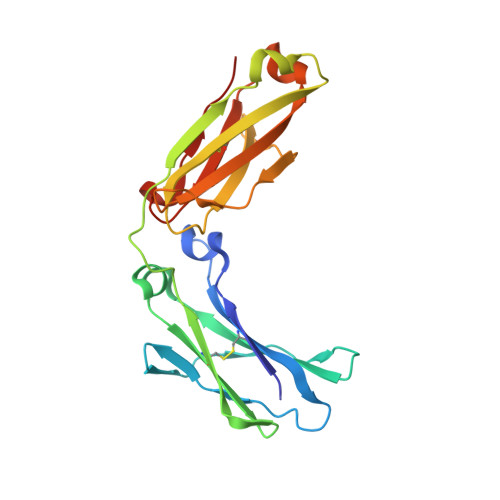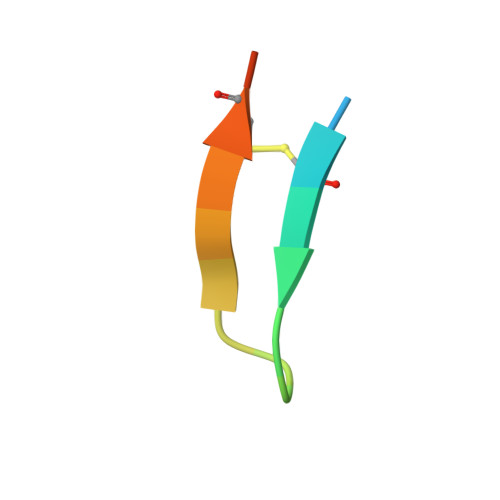Site-Specific Chemical Conjugation of Antibodies by Using Affinity Peptide for the Development of Therapeutic Antibody Format.
Kishimoto, S., Nakashimada, Y., Yokota, R., Hatanaka, T., Adachi, M., Ito, Y.(2019) Bioconjug Chem 30: 698-702
- PubMed: 30606013
- DOI: https://doi.org/10.1021/acs.bioconjchem.8b00865
- Primary Citation of Related Structures:
6IQG, 6IQH - PubMed Abstract:
Artificially modified IgG molecules are increasingly utilized in industrial and clinical applications. In the present study, the method of chemical conjugation by affinity peptide (CCAP) for site-specific chemical modification has been developed by using a peptide that bound with high affinity to human IgG-Fc. This method enabled a rapid modification of a specific residue (Lys248 on Fc) in a one-step reaction under mild condition to form a stable amide bond between the peptide and Fc. The monovalent peptide-IgG conjugate not only maintained complete antigen binding but also bound to Fc receptors (FcRn, FcγRI, and FcγRIIIa), indicating that it is a suitable conjugate form that can be further developed into highly functional antibody therapeutics. CCAP was applied for the preparation of an antibody-drug conjugate and a bispecific antibody to demonstrate the usefulness of this method.
Organizational Affiliation:
Graduate School of Science and Engineering , Kagoshima University , Kagoshima 890-0065 , Japan.

















